Perhaps the most common question that marketers face, is some iteration of 'was this campaign successful?'
How To Calculate The ROI Of Your Marketing Campaigns
Perhaps the most common question that marketers face, is some iteration of 'was this campaign successful?'

Ultimately, almost all forms of digital marketing have a specific purpose, such as driving brand awareness, generating leads, or converting sales.
Measuring the success of your campaigns, and calculating their return on investment, is key to demonstrating to senior business stakeholders that the investment in your campaign was truly worthwhile.
Ideally, the easiest and most concrete way to achieve this is through pasting ‘source data’ into a CRM, booking system, or eCommerce platform. This will allow you to identify how many sales or leads your campaign generated, and also attribute an accurate revenue figure to your work too.
However, many businesses don’t have access to a CRM which has this kind of capability. This is where the ability to calculate ROI comes in handy, as it allows you to estimate the success of your campaigns in a language that business owners understand: profit and revenue.
What is ROI?
ROI or return on investment is a method of calculating the profit or loss of any kind of investment (but, we really only care about it from a marketing perspective in this article). Most commonly, ROI is shown as a percentage (ie. an ROI of 200%), but sometimes might be shown as a decimal or ratio too.
For us marketers, ROI is used to demonstrate the profitability of an investment into a marketing campaign or website. For example, if we run a Black Friday campaign at a cost of £2,000, an ROI figure will tell us how much revenue we generated for our client off the back of this £2,000 investment.
It’s a useful tool for determining the success of a campaign, and allows us to report to senior business stakeholders in the terms they care most about.
Why Do We Use ROI?
When it comes to it, most businesses invest in marketing because they want to generate more money. It’s really that simple. All too often, marketing work can fall victim to guesswork and assumptions.
“We think we’ve generated this many leads,” or “we’ve reached this many people,” won’t mean a lot to a business owner. Instead, reporting upon performance should be focused upon the investment made, and the resulting revenue, and then profit, generated.
By reporting upon marketing from a position of ROI, you’re able to take performance out of technical marketing language and communicate with business owners in their terms. Put simply, if marketing work is profitable, then it will almost certainly be judged as successful.
Marketers get more investment or scope for new campaigns (yay!), and business owners are happy that their investment is driving their business – everybody wins.
How Do We Calculate ROI For An eCommerce Business?
Estimating basic ROI is actually a really easy formula.
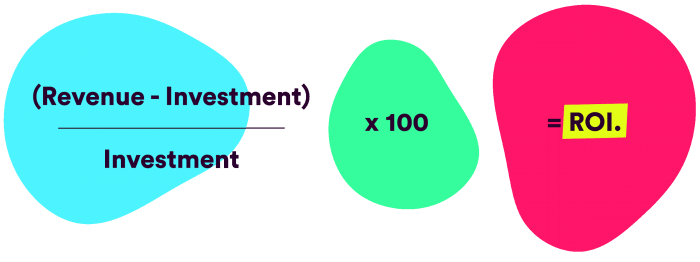
To clarify this then, we’re firstly taking our revenue return, and taking away the initial investment we made into our campaign. We’re then dividing this figure by the original investment figure, before finally multiplying the resulting figure by 100, in order to see this as a percentage.
Most commonly, revenue is found in your Google Analytics account, if you have eCommerce reporting set up. If you don’t, this is coincidentally something we can support with.
Here’s an example for our Black Friday campaign below:

This means that our Black Friday campaign generated nine times as much revenue as it cost us to execute. However, we can begin to take this one step further and involve other commercial metrics into this too. For example, if we know that our client operates at a 60% profit margin on their products, we can factor this into our example too.
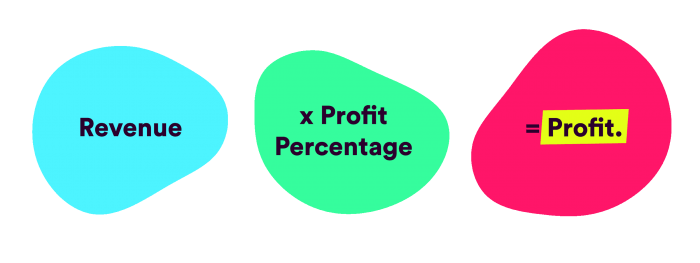

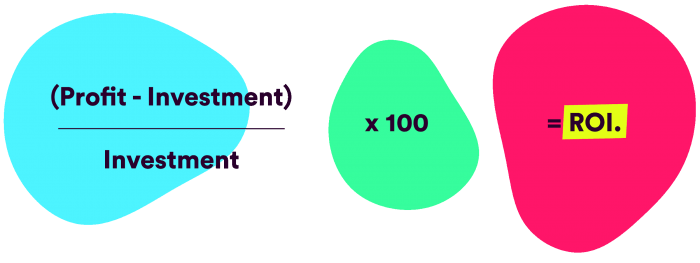

So, when looking at profit and not gross revenue, we can see that our campaign here generated an ROI of 500%. Quite often, this may get shown as 5:1. This means that for every £1 invested into this marketing campaign, £5 of profit was generated.
How Do We Calculate ROI For A Lead-gen Business?
Calculating ROI for a lead-generation site is a little bit trickier, but, still really only takes a few minutes. The core difference here is that we first need to understand how leads generate revenue for our client. In order to do this, we need two additional metrics: average customer order value and lead enquiry to sale rate.
The latter of these two figures, lead enquiry to sale rate tells us how many leads our client is likely to turn into an active, paying customer. For example, our client may turn 20% of all leads into customers.
The former of these figures, average customer order value is simply the average amount a customer will spend with our client. This is often either calculated upon their first purchase or upon their lifetime value (LTV).
The other figure we’ll need here is our ‘number of leads generated.’ As with the revenue figure mentioned earlier, this will almost certainly come from Google Analytics, which allows us to report upon the success and performance of our website and marketing channels.
Let’s revisit our example, and look at how our Black Friday campaign may have worked for a lead-gen site:
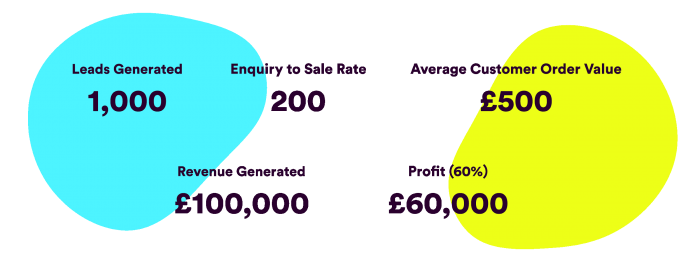
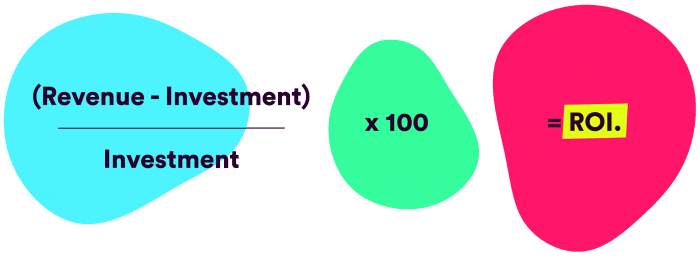

As we can see then, this campaign performed quite a bit better than our eCommerce Black Friday campaign!
NB: It’s also worth noting that for lead-gen sites, their average customer order value and lead enquiry to sale rate may fluctuate based upon seasonality, and as such, it’s based to take an average over a broad view of time (for example, 12 months).
What Does A Good ROI Look Like?
One of the most frequent questions we face from clients is around understanding what good looks like. In our example above, is a 500% ROI a positive or negative result?
This truly stresses the importance of establishing clear ROI goals before a campaign is launched. Here at Clicky, we begin all of our marketing work by getting to know the client, their business, and importantly, what success looks like for them.
This ensures we have an agreed ROI goal in place before any work is undertaken, and both parties understand what needs to be achieved, and by what date.
Ultimately, all marketing work must look to make a profit, at all. If a campaign has made a loss in revenue, it will almost certainly be considered a failure unless it is measured against another metric, such as reach or impressions (ie. for a brand awareness campaign).
Mostly, however, businesses want to ensure their campaigns are generating more profit than they’re costing – simple.
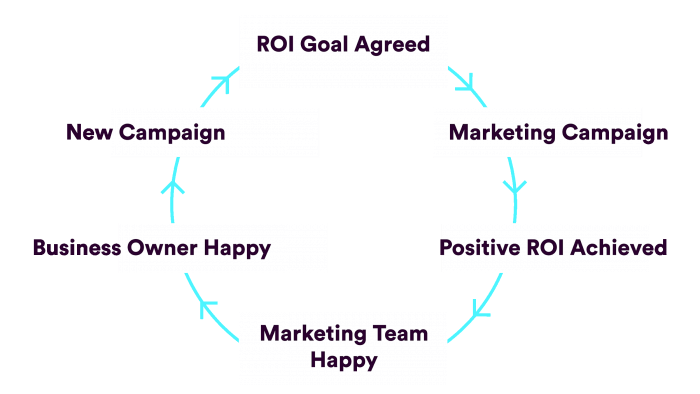
Thanks for signing up to Minutehack alerts.
Brilliant editorials heading your way soon.
Okay, Thanks!


